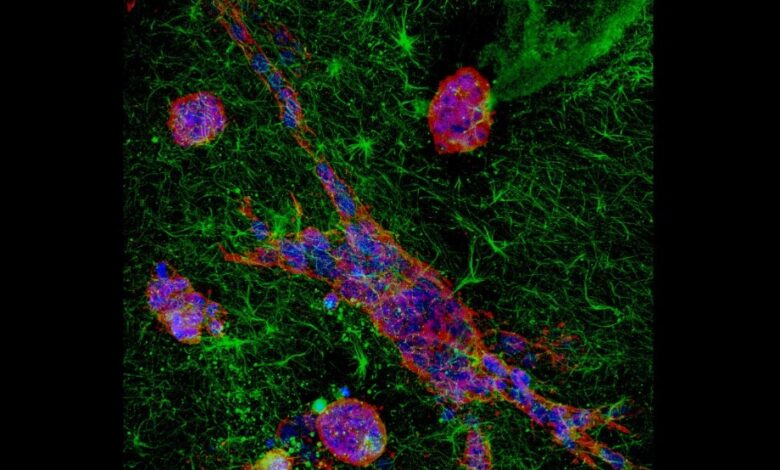Study get new insight into how cancer spreads

New Delhi, 22 November 2024: Even as scientists have been able to gain a lot of insights on different aspects of the dreaded disease of cancer over the years, the process of metastasis or the spread of the tumour from the primary cancer site to distant organs has remained a puzzle. Scientists are only now beginning to figure out triggers and mechanisms that drive it.
A new study from the Bengaluru-based Indian Institute of Science (IISc) has added to the growing knowledge. It has shown that inherent variations in a cancer cell and its interactions with its surroundings mould its migration. It has revealed that cancer cells seem to adapt their migratory pattern depending on the physical and biochemical characteristics of their surroundings, the microenvironment.
Announcing the findings, a IISc press release said the researchers studied two types of ovarian cancer cells that metastasise and invade tissues – OVCAR-3, which has a well-structured polygonal shape, and SK-OV-3, which has an elongated spindle shape. They placed the cells on two different surfaces, one soft and the other stiff, to mimic healthy and diseased tissues and observed their movement.
On a soft surface, both cell types moved slowly and in random directions. But on stiff surfaces, which mimicked the tough, scarred tissue around tumours, the cells responded differently.
“Based on previous literature, I expected stiffness to be an important factor in aggravating cancer cell migration. However, what I did not expect was that the epithelioid ovarian cancer cells (OVCAR-3) were more migratory than the mesenchymal cells (SK-OV-3) on stiffer matrices,” said Madumitha Suresh, former MTech student at the Department of Bioengineering (BE) and first author of the study.
The researchers, the release said, also observed a strange movement pattern in the OVCAR-3 cells. Generally, the direction of movement aligns with the shape of the cell, with the cell’s front portion leading. But when the OVCAR-3 cells moved on stiff surfaces, this did not happen. Their movement became less coordinated with their shape. They seemed to be sliding or slipping instead of moving in a straight line. Surprised, the researchers moved on to understand the process using quantitative approaches.
Methods presently used for studying how cancer cells move are either mathematical approaches that don’t capture changes over time or complex computer-based approaches, such as machine learning. The researchers created a new software toolkit that combined a mathematical concept called Shannon entropy that captures randomness with previously used movement and shape-based measures. The method allowed them to see changes in cell behaviour over time. It also enabled the data to be analysed and quantified numerically. The researchers were able to identify how the epithelioid cancer line exhibits a less restrained relationship between its shape and motion, allowing it to migrate in diverse and surprising ways.
“We aim to extend our study to decipher the collective dynamics of such cancer cells, especially in more complex 3D environments,” said Ramray Bhat, Associate Professor at the Department of Developmental Biology and Genetics and corresponding author of the study. “This will shed fresh light on the pathology of ovarian cancer, a disease that is characterised by rapid metastasis and high morbidity.”
The researchers have published a report on their findings in the science journal, Biophysical Journal.




